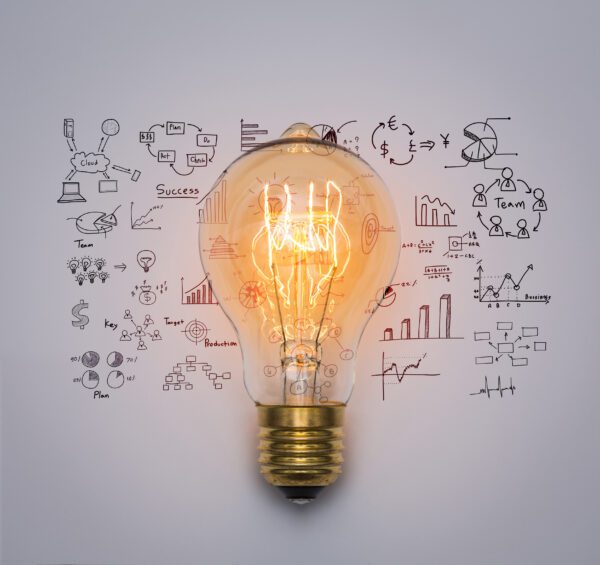From stamp card to gamification apps – how the customer loyalty programs have evolved

Faith that the product of a given brand is the best, and we – the users – are the chosen ones, can work wonders. However, such level of customer loyalty takes years of work. And even though there is only one Apple, each brand has the possibility to build a special relationship with its clients by using tools that – as we know from experience and statistics – work great.
Table of contents:
What does the word “loyalty” mean to you? The first thing that comes to our mind is the attitude towards someone or something – devotion, the feeling of attachment. In the business context, it can translate into loyalty to the brand and desire to purchase other products with it’s signature logo, pride coming from belonging to the brand’s community, fascination or even sympathy, which gives you measurable benefits. The most recognizable example of what customer loyalty really is, is the Apple brand. This phenomenon doesn’t really need to be explained.
Building customer loyalty is, in some ways, an invitation into a long-term relationship. When it comes to the FMCG industry, we build loyalty in a bit different way than compared to the computer or fashion industry. Nonetheless, the aim remains the same: situation, in which the customer chooses our product, even when competitors have something similar, a bit cheaper or of better quality.
Loyalty 1.0
Most of us definitely know loyalty programs in which you collect stamps that can be exchanged for a coffee or loyalty card, which grants a discount for the next purchase. The process doesn’t seem complicated, however, does it really make the client attached to the brand? Does it affect the client’s loyalty significantly? You know how it starts – you sign up for a program. You know how it ends – you receive a prize. But what happens in the middle? What motivates and creates engagement?
This method of brand loyalty may have worked in the 1990s, when the Internet was making its first steps and the so-called free market was just starting in Poland. However, today… it is not attractive for an average client. It doesn’t create engagement and therefore – attachment to the brand.
Loyalty 2.0
The growth of marketing certainly played it’s part in the development of loyalty 1.0 into 2.0. In the second part of the 90s, as well as at the turn of the century, marketing actions went in the direction of segmentation and personalization – first e-mail marketing campaigns or direct mailing started to appear.
Loyalty 2.0 – in comparison with loyalty 1.0 – is still fighting for clients, but in this case the consumers were narrowed into some groups. Marketing experts are trying to respond to their expectations, but still have limited information about their actual needs.
The effectiveness of the 2.0 approach decreases quite quickly, because consumers are overwhelmed with the amount of – in fact quite similar – information, fitted to their needs on a very general level. No wonder that, as the Internet developed, increasing the amount of data available, marketing started to exploit that on a never before seen scale. That is how loyalty 3.0 came to life.
Loyalty 3.0
So how did we go from loyalty 1.0 to loyalty 3.0? The answer is simple – technological revolution of the XXI century drastically changed the way of living and influenced consumers’ way of living. They spend a lot of time on the Internet where they shop, rest, work, date, engage in communities and ideas, express objection or support towards what they think is important. They do not part with their smartphones, which have become the centre of life. Marketing must respond to this challenge and that is how Loyalty 3.0 emerged.
So, what is effective and makes up loyalty 3.0? THREE simple words: MOTIVATION + BIG DATA + GAMIFICATION. To simplify: loyalty 3.0 is about engagement and building a deeper relation between a consumer (internal or external) and a brand, therefore increasing client’s loyalty towards the brand. The foundation of this relationship is big data gathered and analysed per user.
Rajat Paharia in his best-seller book “Loyalty 3.0”. “How to Revolutionize Customer and Employee Engagement with Big Data and Gamification” (which we highly recommend) distinguishes a number of factors that have influenced the need to build loyalty 3.0:
- we live in times of scattered attention (the number of websites, apps, and devices that we use is constantly growing),
- the employees lack engagement (according to the research, up to 70% of employees do not feel engaged in their work),
- social media have changed the dynamics of interaction (we are not only consuming the content but also creating it),
- corporate IT is being consumerised (more and more technological solutions),
- the gen-Y is blooming (digital-era kids, who have grown up in times of rapid changes),
- the workforce is scattered (remote work, telework),
- we need to learn too many things at the same time (constant updates and technological progress),
- the software is “eating” the world (mobile internet access and free software tools support that process).
References
Literature:
- R. Paharia, Lojalność 3.0. Jak zrewolucjonizować zaangażowanie klientów i pracowników dzięki big data i grywalizacji, Wyd. MT Biznes, Warszawa 2014.
- P. Tkaczyk, Grywalizacja. Jak zastosować mechanizmy gier w działaniach marketingowych, Wyd. Helion, Warszawa 2012.
- M. Tesławski, Lojalność konsumenta. Jak budować trwałe relacje z klientem, Wyd. Helion, Warszawa 2012
Electronic publications
- https://interactivesystems.pl
- https://marketingprzykawie.pl
Image: Image by Freepik
Author: Joanna Kozłowska
Product Owner
Joanna has been involved in projects for years - she understands the specificity of B2B loyalty programs. She is particularly interested in optimization solutions and user value.
Editorial: Ewa Nowaczyk-Przybylak
Translation: Monika Witkowska

Managing Director
+48 728 877 351
k.skocki@interactivesystems.pl
- you will find solutions to your challenges;
- you will learn the mechanisms to activate B2B partners and customers;
- you will get a reliable valuation and implement the loyalty program concept.
Want to find out if you’re getting the most out of your sales support?
Use our performance calculator and see what it looks like for you!


